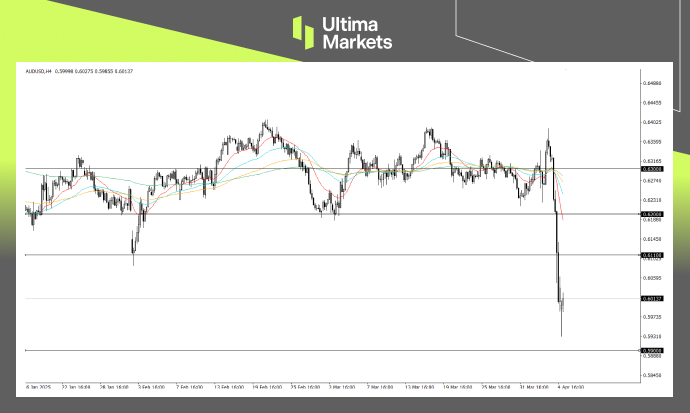
Ultima Markets App
Trade Anytime, Anywhere
Important Information
This website is managed by Ultima Markets’ international entities, and it’s important to emphasise that they are not subject to regulation by the FCA in the UK. Therefore, you must understand that you will not have the FCA’s protection when investing through this website – for example:
- You will not be guaranteed Negative Balance Protection
- You will not be protected by FCA’s leverage restrictions
- You will not have the right to settle disputes via the Financial Ombudsman Service (FOS)
- You will not be protected by Financial Services Compensation Scheme (FSCS)
- Any monies deposited will not be afforded the protection required under the FCA Client Assets Sourcebook. The level of protection for your funds will be determined by the regulations of the relevant local regulator.
Note: Ultima Markets is currently developing a dedicated website for UK clients and expects to onboard UK clients under FCA regulations in 2026.
If you would like to proceed and visit this website, you acknowledge and confirm the following:
- 1.The website is owned by Ultima Markets’ international entities and not by Ultima Markets UK Ltd, which is regulated by the FCA.
- 2.Ultima Markets Limited, or any of the Ultima Markets international entities, are neither based in the UK nor licensed by the FCA.
- 3.You are accessing the website at your own initiative and have not been solicited by Ultima Markets Limited in any way.
- 4.Investing through this website does not grant you the protections provided by the FCA.
- 5.Should you choose to invest through this website or with any of the international Ultima Markets entities, you will be subject to the rules and regulations of the relevant international regulatory authorities, not the FCA.
Ultima Markets wants to make it clear that we are duly licensed and authorised to offer the services and financial derivative products listed on our website. Individuals accessing this website and registering a trading account do so entirely of their own volition and without prior solicitation.
By confirming your decision to proceed with entering the website, you hereby affirm that this decision was solely initiated by you, and no solicitation has been made by any Ultima Markets entity.
I confirm my intention to proceed and enter this website Please direct me to the website operated by Ultima Markets , regulated by the FCA in the United KingdomTrade War Escalation Hits Global Markets, Australian Dollar Tumbles
Last week, global markets were rattled by the latest developments in trade policy led by Donald Trump. His administration’s announcement of comprehensive tariffs triggered a wave of volatility across financial markets.
In response to rising trade tensions, China imposed a 34% retaliatory tariff on all U.S. imports, intensifying fears of a global recession.
Australian Dollar: Worst-Performing Major Currency
The escalation in trade tensions weighed heavily on the Australian Dollar (AUD), which dropped to 0.5930 against the U.S. Dollar—its lowest level since April 2020, during the peak of the COVID-19 pandemic.
The AUD also saw sharp losses against safe-haven currencies like the Japanese Yen and Swiss Franc, depreciating more than 5% in a single day on Friday.
This sharp decline is largely attributed to Australia’s close economic ties with China and its role as a major global exporter. With global trade under pressure from increased tariffs, demand for Australian exports—especially commodities—is expected to decline, adding further downside pressure on the AUD.
Known as a risk-sensitive currency, the AUD was hit hard as investors moved away from riskier assets amid rising trade uncertainty. The New Zealand Dollar (NZD) also suffered, ranking among the worst-performing majors due to similar economic exposure.
Global Risk Appetite and RBA Outlook
The recent escalation in trade tensions has fueled a risk-off environment, pushing investors away from riskier assets like the Australian Dollar (AUD). As global markets continue to face uncertainty due to tariffs and trade policies, the AUD is under increased pressure.
Given these challenges, the Reserve Bank of Australia (RBA) may adopt more accommodative monetary measures. While the RBA cut rates in February, it chose to pause in its most recent meeting, indicating that it will monitor global uncertainty before deciding on further cuts. If inflation continues to slow and the economy weakens, the RBA may act to stimulate growth.
The potential for rate cuts or dovish rhetoric from the RBA could add further downward pressure on the AUD, which is already struggling against the U.S. Dollar and safe-haven currencies like the Japanese Yen and Swiss Franc.
Outlook for the Australian Dollar
In the short term, the outlook for the Australian Dollar remains grim. With global trade under pressure from rising tariffs, the Australian economy faces significant headwinds, particularly in its export-heavy sectors.

(AUDUSD, 4-H Chart Analysis; Source: Ultima Markets MT5)
From technical perspective, the AUD/USD pair has seen a sharp decline over the past week. The next key support level to watch lies around 0.5900, with the potential for a further breakdown if the broader risk-off sentiment persists. On the upside, resistance is seen near the 0.6100 – 0.6110.
However, given the continued uncertainty surrounding global trade, the path of least resistance for the AUD remains skewed to the downside.
Disclaimer
Comments, news, research, analysis, price, and all information contained in the article only serve as general information for readers and do not suggest any advice. Ultima Markets has taken reasonable measures to provide up-to-date information, but cannot guarantee accuracy, and may modify without notice. Ultima Markets will not be responsible for any loss incurred due to the application of the information provided.
Why Trade Metals & Commodities with Ultima Markets?
Ultima Markets provides the foremost competitive cost and exchange environment for prevalent commodities worldwide.
Start TradingMonitoring the market on the go
Markets are susceptible to changes in supply and demand
Attractive to investors only interested in price speculation
Deep and diverse liquidity with no hidden fees
No dealing desk and no requotes
Fast execution via Equinix NY4 server








